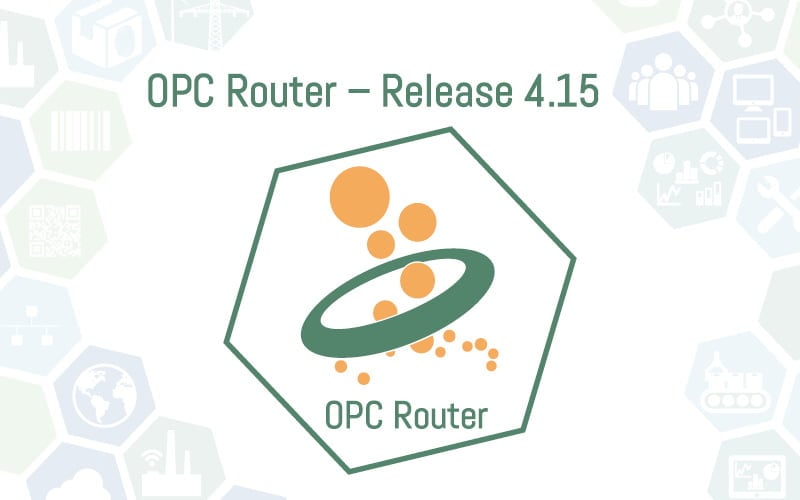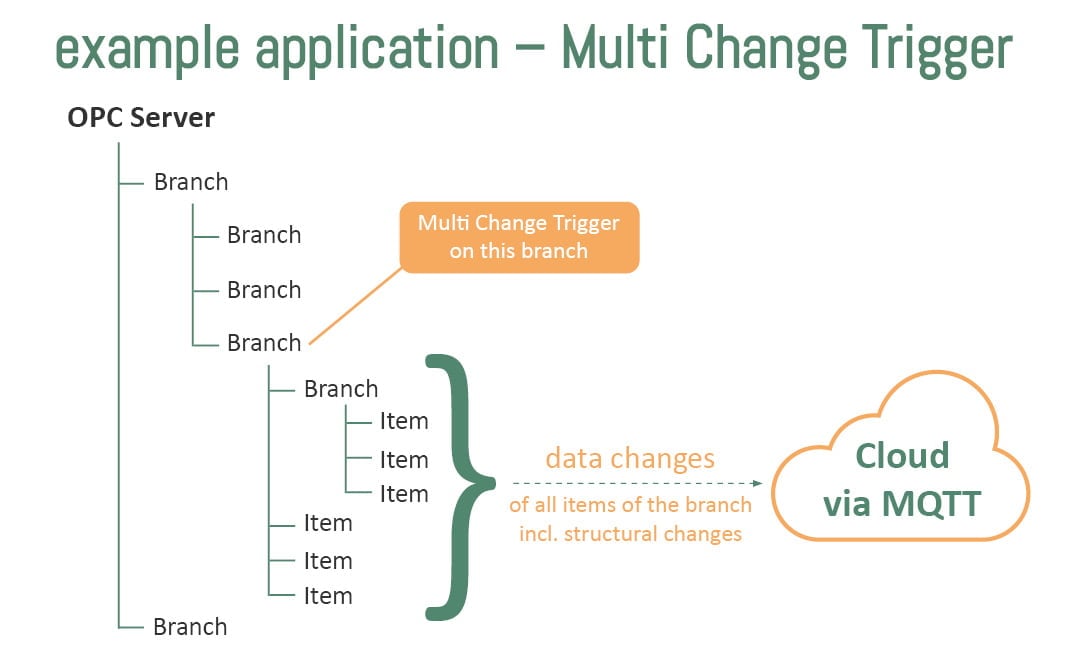Release 4.15 of the OPC Router offers a number of new features. This time the focus will be on file processing, OPC UA and cloud connectivity.
File processing – integrate file interfaces quickly and easily
Monitor directories – process files
With OPC Router any file handling can now be configured to optimally integrate file interfaces. With the file transfer object files can be read, written and deleted. After processing files, a structured storage of the processed files can optionally take place to ensure maximum traceability.
The new file trigger makes it easy to trigger connections when new files are due for processing. This enables simple and reliable directory monitoring with just a few clicks.
Evaluation of XML, JSON and CSV integrated in OPC Router
The contents of the files can be processed arbitrarily in the connection after reading in. For the standard formats XML, JSON and since this release also CSV there are ready evaluation objects available, in which the data processing can be configured very easily according to the standard.
However, not only text-based files can be processed, but also binary formats. Images, for example, can be read in as binary data with the new functions, stored in the database, sent by telegram or, if required, stored again as images in a new file.
OPC UA Structures – Complex Data with Easy Access
Structures have been defined in the OPC UA standard to map complex data. The data point tree of an OPC server can now contain items from structures and methods (see Release News 4.14). In the new release it is now also possible to access OPC UA structures from the OPC Router OPC Client Plug-in.
Structures are already being implemented on the market by some OPC servers. This makes it much easier for machines, for example, to consistently offer related data to the OPC client.
Cloud connection and data transfer further simplified
More and more often the OPC Router serves as a gateway for the cloud in addition to the industry 4.0 data distribution in production. With its REST plug-in and the MQTT plug-in, it easily serves the standard interfaces for coupling cloud platforms.
In the new release, this is made even easier by two improvements.
New Cloud Profiles
We have implemented the cloud profiles in the OPC Router for easy connection to the large cloud platforms. These profiles make the configuration of the connection much easier, since only the platform specific login data has to be entered in the OPC Router and the OPC Router independently determines the MQTT connection configuration.
In the new release we extend the available cloud profiles. In addition to the previously available Google IoT Core profile, the profiles for Microsoft Azure and Amazon AWS are now also available.
Multi-Datachange Trigger
When data is transferred to the cloud, it is continuously sent to the platform. The data contains the current data point values, the time stamp and the identification of the data point. In order to create a comprehensive connection of an OPC UA system to the cloud platform in the OPC Router as easily as possible, the Multi-Datachange Trigger has been available since this version. With the trigger it is possible to monitor entire branches of an OPC UA data point tree for changes and to get the changed data points with their values reported. The reported data points can then be sent to the cloud after they have been converted into the desired JSON document using the JSON transfer object, for example.
Since the trigger also detects and takes over structural changes in the OPC UA tree, a complete machine-to-cloud connection can be realized with a single OPC Router connection.
Run a free test now!
Get your personal link to the most recent OPC Router configuration and sign awake for product news.


